 | The alpha (Α) and the omega (Ω) are the first and last letters of the Greek alphabet. The Alpha and Omega (ΑΩ) is an early inscription, found in the Roman catacombs, signifying God's eternal being and reminding us of our limited understanding of a God who is without beginning or end. This God is the eternal One whom we worship and praise as we gather together. |
 | The cedar has been a symbolic tree of the Mediterranean region since ancient times. The cedars found on the hillsides of Mount Lebanon were so treasured that they were Solomon's choice for the temple. When cedars are cut down they do not form new shoots. For this reason they symbolize death. Yet the tree also signifies life with its characteristic long life span, its growth to magnificent heights, its fragrance, and its evergreen leaves. These splendid evergreens are planted by gravesides as a reminder of not only our lament of sin and death but our assurance of eternal life found in Jesus Christ. |
.jpg) | The Celtic Cross, also known as the Cross of Iona, is known for its patterned bas-relief designs and has the characteristic circle behind the cross. To the ancient Celts the circle represented the sun, the light of the world; but it is suggested that in the sixth century the Irish missionary Columba, who eventually established a church on the island of Iona, pointed them to a new meaning -- God's eternity and the eternal presence of Christ, the Sun of Righteousness. The promise of eternal life is extended to all and proclaimed through the word. |
 | "Kyrie eleison Christe elesion" — "Lord have mercy, Christ, have mercy" —we pray these words of petition for all creation, our world, ourselves, our community, the church worldwide, and for those who cannot or will not pray. Together we say, "So be it" ("Amen"), in agreement and thankful assurance that our help is in the name of the Lord whom this mercy comes. |
 | We speak with our hands, communicating to others and to God the yearning of our whole being. We clench them in frustration or anger, raise them up in prayer, or lay them on another for healing and blessing. As we open our hands we show our willingness to receive and give, presenting ourselves as a response to God's gracious gift. |
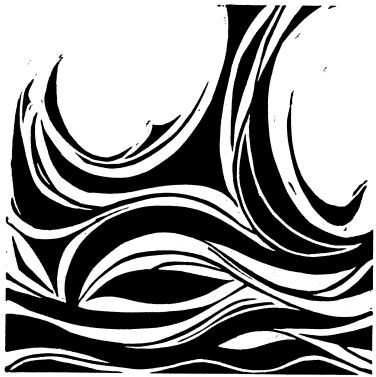 | The baptismal symbol of water represents the new identity, the spiritual birth, found in Christ. In our baptism we are cleansed and given the sign of love and hope found in the covenantal relationship of God, graciously shared with us through Christ, and reflected and nurtured in the Christian community of which we become a part. |
 | In Scripture the grain from which bread is made is a symbol of God's nourishing our whole being. Most familiar in the Old Testament is the manna given to the Israelites to physically sustain them through the wilderness. The loaves placed in the tabernacle represented their spiritual sustenance through God's continuing care. The New Testament contains many examples of people being fed. In the Lord's Supper these elements come together in our rendering thanks through communal remembrance of the incarnate Word, Christ's body broken and raised for us. In this design the wheat is accompanied by the cup, a symbol of Christ's blood shed for us. May we share in the banquet of the Lord until Christ comes again! |
 | From the first two letters of Christ's name written in Greek (XPIΣTOΣ) a monogram is formed known as the Chi Rho (XP), Found in the catacombs, this symbol is one of the earliest monograms used by christians to represent the resurrected Christ. It dates even earlier than the cross, the first symbol we usually connect with Christ and Christianity, which did not appear until the fourth century. Variations on the symbol have been made over time. The P can be shaped to look like a shepherd's crook; or, by removing one arm of the X, a hidden cross is revealed. The Latin word pax, meaning "peace," has also been incorporated into monogram. Each symbolizes the nature of God in Christ Jesus. Go forth in the name of Christ. |
 | Symbolic of all creation, the Tree of Life points not only to the creation narrative in the first chapters of Genesis but also to the hope of creation's fulfillment mentioned in the last chapters of Revelation. Neither reference describes the type of tree it is. Here it is depicted as an olive tree. The olive tree reminds us of the covenantal relationship between God and creation. The evergreen leaves and its branches give shelter and rest. The abundance of fruit displays God's providence. The oil excreted from its leaf is used for healing. And for us, like for Noah, its leaves symbolize the hope and peace of renewal. Praise the Lord! May all creation serve and glorify our Creator God. |
 | The circle, having no beginning or end, symbolizes God's eternal being and helps us recognize our human limitations in understanding him. Only as we experience God breaking through his transcendence to be near and present with us, guiding all and providing for all, can we begin to encounter such a love that endures forever. The circle's boundlessness has the opposite character of the square, with its orientation through specific directions and corners. Turning this design on its edge highlights this distinction and reveals a cross, symbolizing God's greatest gift of love, restoration, and peace to the world. |
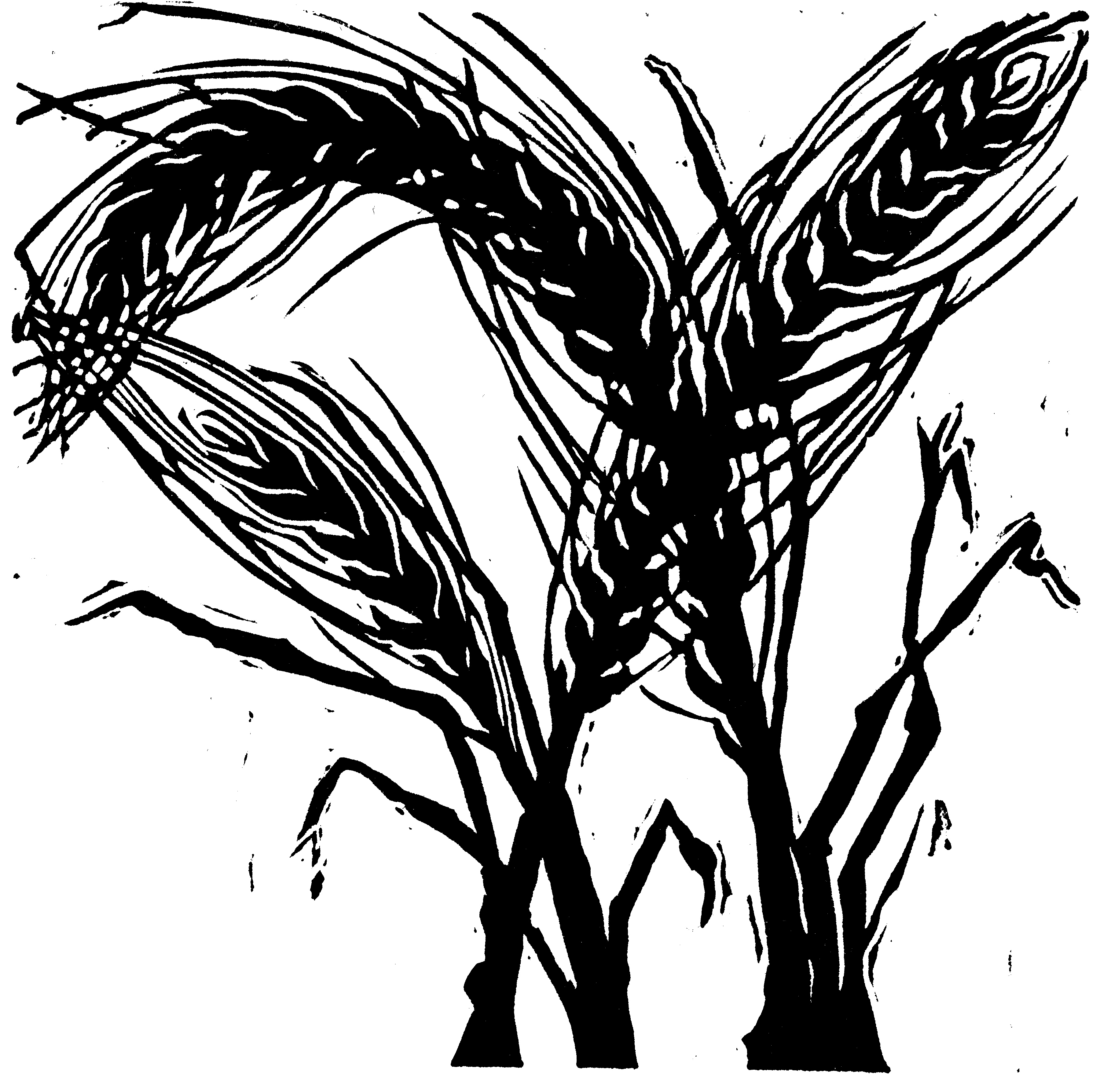 | The grain from which bread is made reminds us first of our need for physical sustenance. God provides for us in the earth's abundance and seasons. Furthermore, the wheat symbolizes our need for spiritual nourishment: it is symbolic of our death, resurrection, and life through Jesus Christ, the bread of life. This image suggests the simple thanks we give for the overwhelming fullness of God's bounty now and forevermore. |
 | The shoot growing from the stump of Jesse is a well-known Old Testament symbol of the promised Messiah. Here, at the center of the biblical account, Scripture uses the symbol of a tree to explain the profound mystery of life, death, and our need for renewed life. Advent is a time to focus on the past, present, and future aspects of this salvation story and the glorious promise made possible through the coming of the Lord. To reflect this, the image background turns from dark into light while the overall tone points to the coming suffering amidst joyful renewal. |
 | Throughout the Old and New Testament symbolic references to light abound, Jesus Christ is referred to as the bright morning star, the light of the world, the sun of righteousness. The imagery of the sun, in its life-giving yet blinding way, captures the awesomeness of God, a mystery we cannot grasp. Yet when God's light is directly encountered we hear the words "Do not be afraid; for see—I am bringing you good news"(Luke 2:10). Let us join the shepherd in responding, "Let us go now and see" this light that has come int the world. This design captures the piercing rays of the sun which penetrate the dark. |
 | During the season of Epiphany we focus on God revealing himself to the world in the Christ child. The rays, spreading out from the center of the sun, represent the dispersion of the gospel to the four corners of the earth. The cross reminds us of Jesus Christ, the one who brings together the vertical and horizontal, the earthly and heavenly, and brings life from death. The hope of this gift is for all generations in all places. As children of the light we must bear this light to those we encounter in our daily lives. |
 | At the baptism of our Lord we see the relationship of the Son with the Father through the unifying love of the Spirit. The baptismal water and the dove remind us of our covenant God, who graciously gives us this same gift. Joining Christ, through the cleansing of our sins and the movement from death into life, we are anointed with the gift of the Spirit to boldly live in unity. The flow of grace is highlighted in this print by the element of movement. As God's grace flows to us (vertical movement) so we could reflect this flow of grace to one another (horizontal movement). |
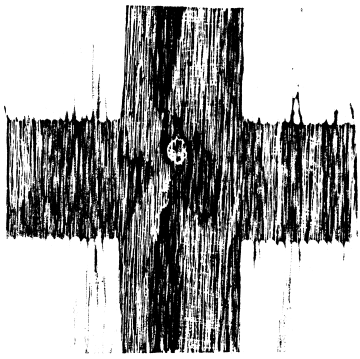 | The first day of the Lenten season reminds us of two things, as seen in this simple wooden cross. Suggested first is the ruggedness and earthiness of our sinfulness, our need for salvation, and the suffering and death of Christ on our behalf. Second, the ash from last year's palms, symbolized by the mark on this cross, reminds us not only of death but of the victory and joy of new life found in Christ. Penitence and mourning arise to hope, peace, and rest. |
.jpg) | This cross is based on an Ethiopian design pattern. The rhythmic interlocking movements of the lines symbolize our unity with Christ in his death and resurrection. The Greek cross in the middle has arms of equal length to remind us that Christ's sacrifice reaches to the four corners of the earth. During the Lenten season we focus not only on the darkness—the seeming absence of God because of our waywardness—but also on the presence of God and our unity with Christ, through God's grace of reconciliation and renewal, indicated by the empty cross and the design's entwined lines. |
 | In ancient times the palm tree was associated with life and blessing. Found in desert oases, it was referred to as the tree of life. The branch was used as a victory symbol at public games and in battles. In the Old Testament palm fronds were carried in the Festival of Booths (Lev.23:40) as well as used as a motif in the design of the temple (1 Kings 6:29-35). As Jesus entered Jerusalem the people waved palms in triumphant rejoicing, laying them on the road before their king. Psalms appeared in the funeral art of the catacombs, symbolizing Christ's triumph over sin and death. This image depicts the joy and the sorrow of the moment—the paradox of Christ's victory of life through humility and death. |
 | The cross, with its intersecting vertical and horizontal arms, is our constant reminder that in Christ heaven and earth are reconciled. Through his actions Christ restores our broken relationship and makes us whole. His suffering is represented in the arms of the cross shaped as nails. The cup, or chalice, symbolizes Christ's agony in the garden of Gethsemane as he asks, "If it is possible, let this cup pass from me". The cross rises up out of the cup as a sign of Christ's obedience, drinking the cup of death, offering us the "cup of the new covenant". |
 | To the Lenten cross of wood the symbol of thorns and thistles is added. In sharp contrast to a splendid, kingly crown, Jesus Christ bore a crown of thorns. As a reminder of the toil mentioned in the Genesis account of the fall, thorns represent the complete suffering, pain, and lowliness Jesus submitted to in placing our sins and God's judgement on himself. |
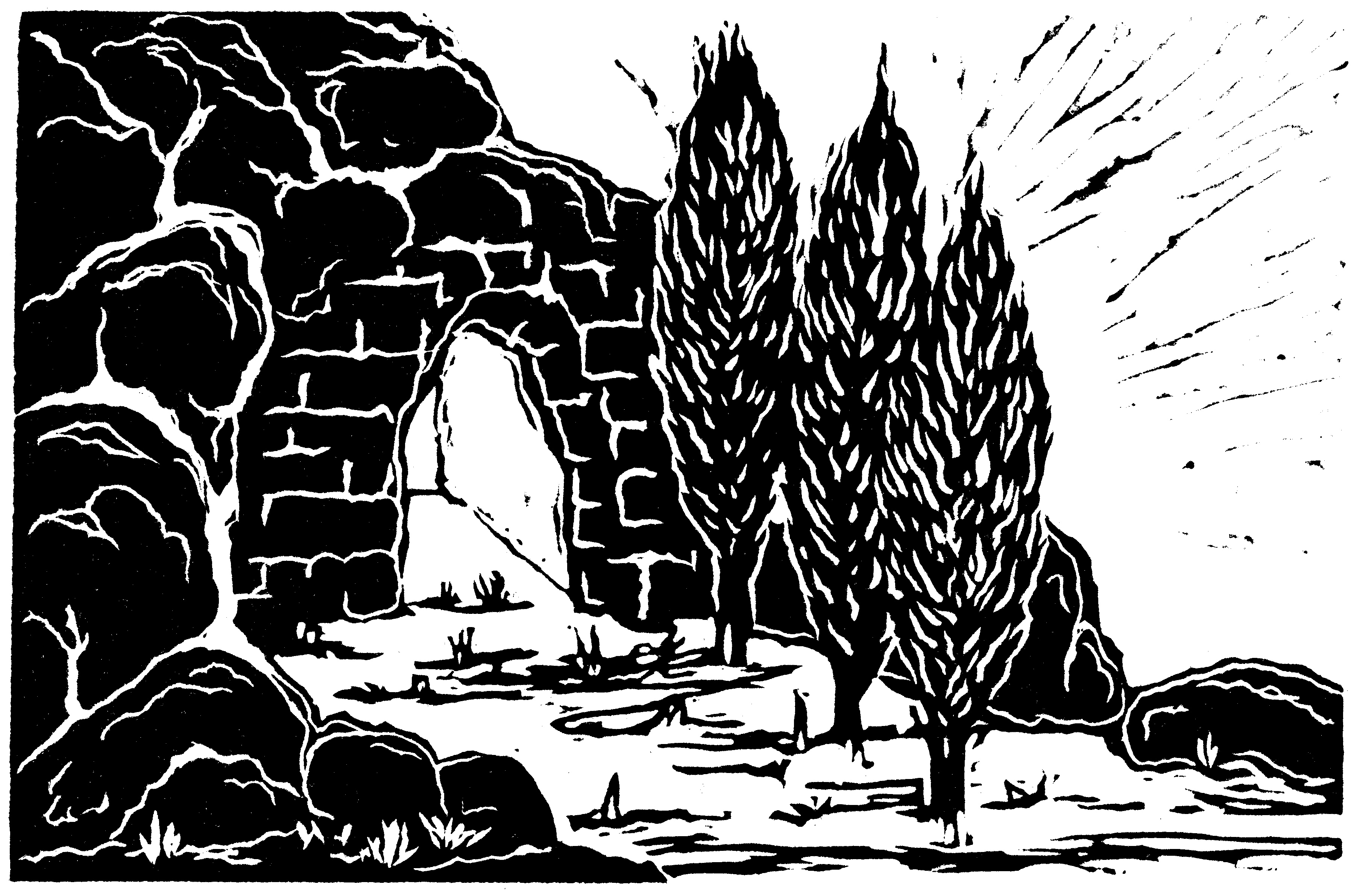 | Representational of the resurrection is the empty tomb. The actual rising of Christ is not described in the gospels and for many years was not depicted in art. In the darkness of this print we are reminded of Christ's death. Yet the strength of the light—the renewal of life—is most powerful. The tomb becomes the place in which we are reminded that death meets life, that the Son is reunited with the Father. And, with the mourning women who are the first witnesses to the empty tomb, we realize Jesus Christ is not here, yet present with us at the dawning of a new day. |
 | Prefacing the empowerment of the people through the Spirit at Pentecost, Jesus Christ the Son of God, our mediator, ascends and joins the Father. On a mountain, symbolically connecting earth and heaven and portraying the vastness of Christ's reign over all creation, the disciples watch as their Lord is lifted up in majesty. Depicted in this image are the clouds coming back together again, shaped by the wind and presence of the Holy Spirit, and the disciples already returning to Jerusalem, not yet understanding what is to come. |
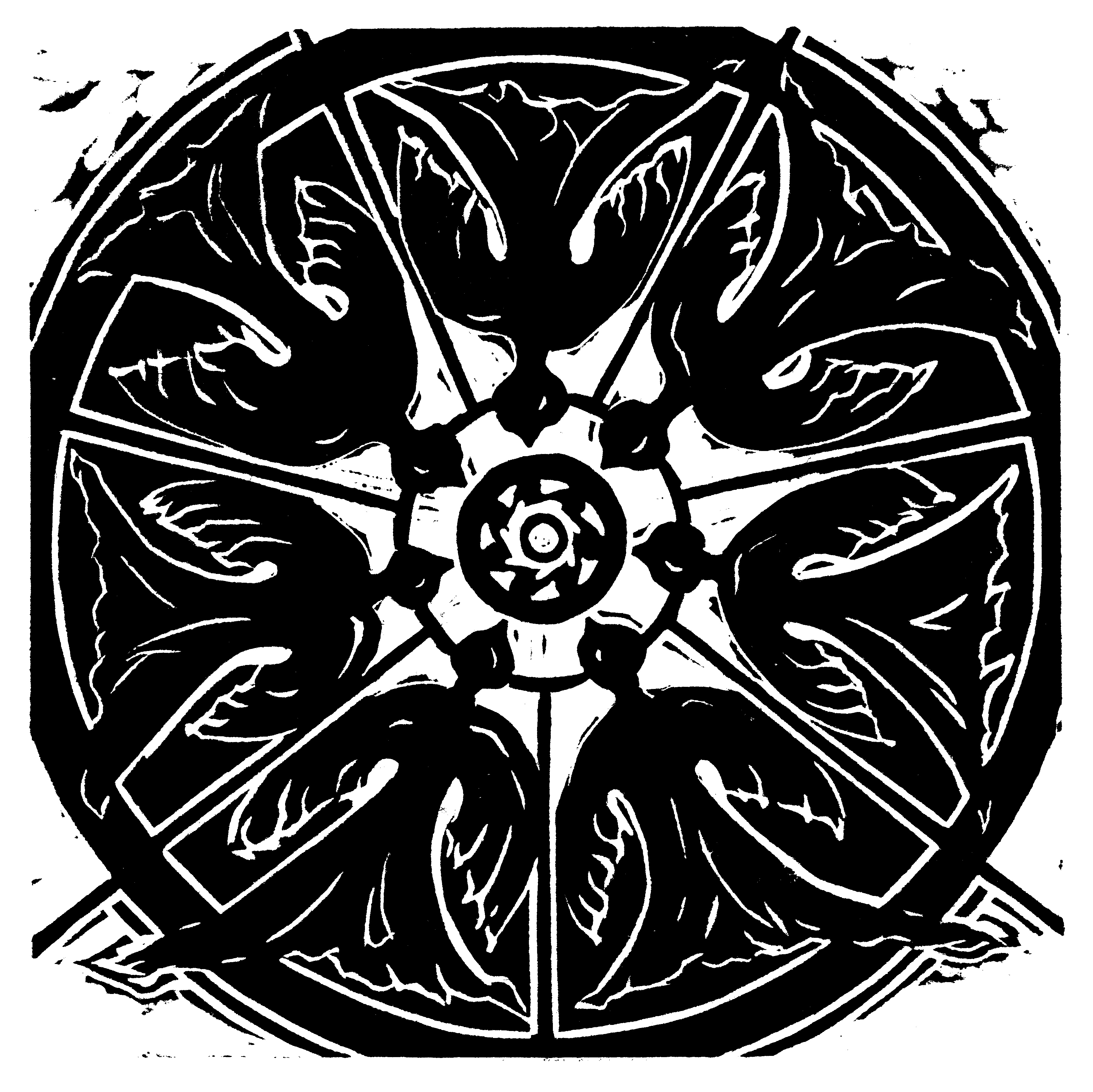 | During Pentecost we celebrate the advent of the Holy Spirit. The "fruit of the Spirit", depicted here in the shape of flaming doves, is represented by characteristics and attitudes. In Galatians 5:22-23 nine characteristics are listed. Six are recorded by the prophet Isaiah (11:2-3). In medieval art seven doves are shown because a seventh characteristic—piety—was added to the Septuagint, the Greek translation of the Hebrew Bible. Our focus, though, is not on the exact number but on the out-pouring of this wonderful gift. The presence of the living God among us unites us all as one community with a diversity of gifts. This diversity in unity is represented by the circle, a reflection of the unity of God in three Person. |
 | Thrones are befitting the honor due an exalted King, majestic and glorious (see Rev. 4). This image is a close-up view, only a hint of the decoration and adornment appropriate for the throne of Christ, sovereign Lord over all creation. Quatrefoils, as seen in the middle of the print, have been used in architectural tracery features since medieval times. They depict the four gospels which tell the story of Jesus' life and ministry. In all times and in all places may honor and glory be given to him! |
 | Any attempt to visually communicate the Trinity can only hint at the mystery of God, who is at once personal and interpersonal. This print touches on this idea of a God in community, one God in three persons, with a triquetra—an early trinitarian design used especially in Great Britain. Three arcs, formed from one circle, denote indivisibility and equality; the one continuous line that entwines represents eternity and relationality. Note the simple triangle formed in the very middle—probably the first trinitarian symbol. Surrounding the triquetra is a trefoil. It is composed of three joined circles forming a stylized leaf, again signifying one God in three persons. |
 | The vine and branches express the relationship God has with his children. The vineyard flourishes under the tender care of God, the keeper of the vineyard. The children of God receive life and fruitfulness from Christ, the true vine, just as God promised. The grapes represent the fruit from the vine, while the clusters show a people united by the grace of our loving God. |
 | In biblical times the city was the center of life, where feasts and celebration drew people together from all around. Like the image of a building with a cornerstone, the columns here symbolize a strong community edifice whose capstone is Jesus Christ. The building columns also represent a connection between heaven and earth. Through reconciliation and being one in Christ, may we as a community represent the Kingdom of God here on earth. |




.jpg)













.jpg)









